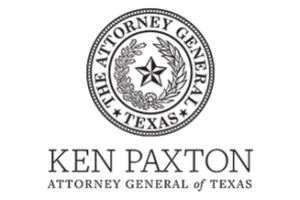Pre-COVID:
• Medicaid reimbursements only cover 70 to 80 percent of the cost of care (Medicaid covers more than 60 percent of all nursing home residents)
• Average nursing home operating at a loss or razor thing profit margin (-0.3% on average in 2018)
With COVID:
• Supplies to fight COVID-19 can increase costs up to 103 percent
• Labor costs have increased up to 18 percent on average
• Estimated revenue loss of up to 23 percent or $57 billion
Below is the full report:
Medicaid: The Primary Payer For Nursing Homes
• Medicaid covers more than 60 percent of all nursing home residents and roughly 50 percent of costs for long-term care services and support. (The Center On Budget And Policy Priorities, 4/14/20)
• “Nursing homes predominantly care for two groups: short-term post-acute care patients with Medicare coverage and long-term residents with Medicaid coverage. Medicare is a relatively generous payer, whereas Medicaid often pays below the cost of caring for these frail and medically complex individuals.” David C. Grabowski, PhD, Harvard Medical School & Vincent Mor, PhD, Brown University (Journal Of American Medical Association, 5/22/20)
Medicaid’s Chronic Underfunding Of Nursing Homes
• Medicaid only covers 70 to 80 percent of cost for care: “When it comes to nursing home care, as the old saying goes, we get what we pay for. Due in part to the exclusion of long-stay nursing home services from the Medicare benefit, Medicaid is the dominant payer of nursing home services … Medicaid payment rates are typically 70-80% of private pay prices.” David Grabowski, PhD Professor, Harvard Medical School (Testimony To U.S. Senate Finance Committee, 3/16/19)
• Many nursing homes only stay in business by subsidizing long-term Medicaid residents with short-term Medicare post-acute care: “The economics of nursing home care hinges on admitting enough short-term Medicare beneficiaries to cross-subsidize the care of long-term residents with Medicaid coverage. Nursing homes that are predominantly dependent on the lower Medicaid reimbursement are poorly resourced, have lower staffing levels, are located in poorer neighborhoods, have the most quality problems, and are most likely to close.” David Grabowski, PhD, Harvard Medical School & Vincent Mor, PhD, Brown University (Journal Of American Medical Association, 5/22/20)
Nursing Homes Are Operating On Razor-Thin Margins Or Net Losses
• “In 2018, the average total margin – reflecting all payers (including managed care, Medicaid, Medicare, and private insurers) and all lines of business (such as skilled and long-term care, hospice, ancillary services, home health care, and investment income) – was –0.3 percent, down from 2017 (0.6 percent).” (MedPAC Report To Congress: Medicare Payment Policy, 3/1/20)
• “Average non-Medicare margin (which includes all payers and all lines of business except Medicare) was –3.0 percent, down from –2.4 percent in 2017.” (MedPAC Report To Congress: Medicare Payment Policy, 3/1/20)
HOMES: TOTAL MARGINS CONTINUED TO DECLINE & WERE SLIGHTLY NEGATIVE IN 2018
Type of margin 2013 2014 2015 2016 2017 2018
Total margin 1.9% 1.9% 1.6% 0.7% 0.6% -0.3%
Non-Medicare margin -1.8% -1.5% -2.1% -2.4% -2.4% -3.0%
Note: Nursing Homes. “Total margin” includes the revenues and costs associated with all payers and all lines of business. “Non-Medicare margin” includes the revenues and costs associated with Medicaid and private payers for all lines of business.
Source: MedPAC analysis of Medicare freestanding nursing home cost reports for 2013 to 2018
Many Nursing Home Providers Forced To Either Cut Costs Or Close Their Doors
• “Low or negative margins for a substantial portion of a nursing home’s population strongly incentivizes facilities to prioritize labor-saving care delivery approaches … to lower the costs of care. A high-Medicaid census is likely to lead to nursing home closures, which can also put seniors at risk.” David Grabowski, PhD, Harvard Medical School (Testimony To U.S. Senate Finance Committee, 3/16/19)
• “Others (nursing homes) are losing money as their occupancy rates fall and more of their patients’ long-term care is covered by Medicaid, which in many states does not pay enough to keep the lights on.” (The New York Times, 3/14/19)
Minority & Rural Communities Impacted Most – Leaving Residents, Families Scrambling
• “U.S. nonhospital-based nursing homes that serve predominantly Medicaid residents have fewer nurses, lower occupancy rates, and more health-related deficiencies. They are more likely to be terminated from the Medicaid/Medicare program, are disproportionately located in the poorest counties, and are more likely to serve African-American residents than are other facilities.” David Grabowski, PhD Professor, Harvard Medical School (Testimony to U.S. Senate Finance Committee, 3/16/19)
• “More than 440 rural nursing homes have closed or merged over the last decade, according to the Cowles Research Group, which tracks long-term care, and each closure scattered patients like seeds in the wind. Instead of finding new care in their homes and communities, many end up at different nursing homes far from their families … The relocations can be traumatic for older residents, and the separation creates agonizing complications for families. Relatives say they have to cut back visits to one day a week. They spend hours on the road to see their spouses and parents.” (The New York Times, 3/14/19)
COVID-19 Impact: Sharp Increase In Costs With Significant Decline In Occupancy & Revenue
• “For nursing homes, the outbreaks mean surging costs for things such as protective masks, gowns and gloves, plus bonuses and other personnel expenses as they try to maintain staffing when employees are sidelined by the virus or fear coming to work.” (The Wall Street Journal, 5/27/20)
• Supplies to fight COVID-19 can increase costs up to 103 percent: “Increase in non-labor costs (infection control supplies and PPE) for a community without a COVID-19 positive case can be up to 73 percent. For communities with a COVID-19 diagnosis, it can be up to 103 percent.” (Dr. Ira Bedzow, NY Medical College, FoxNews.com, 4/29/20)
• Labor costs have increased up to 18 percent on average: “On average, labor costs have increased up to 8 percent for senior living communities that remain COVID-19 free and up to 18 percent for COVID-19 positive senior living communities. Communities are hiring additional employees to provide added services and are paying overtime and hero bonuses.” (Dr. Ira Bedzow, NY Medical College, FoxNews.com, 4/29/20)
• Occupancy down by nearly 100,000 residents: “The coronavirus pandemic dealt a crushing blow to nursing homes across the U.S., driving down their occupancy by nearly 100,000 residents between the end of 2019 and late May, according to new federal data. (The Wall Street Journal, 6/4/20)
• Estimated revenue loss of up to 23 percent or $57 billion: “Lost revenue is estimated at around 8 to 23 percent. Because of COVID-19, communities cannot continue move-ins or use revenue from new residents to counteract these expenses. All in all, lost revenue and an increase in expenses are projected at $40 billion to $57 billion over the next year. This means that many homes will fail.” (Dr. Ira Bedzow, NY Medical College, FoxNews.com, 4/29/20)
• Significant drop in post-acute care, which helps many facilities keep their doors open: “Currently, few nursing homes are admitting short-term Medicare beneficiaries. Hospitals are not performing elective procedures like joint replacements so patients who would ordinarily require post-acute care are not being referred to nursing homes.” David Grabowski, PhD, Harvard Medical School & Vincent Mor, PhD, Brown University (Journal Of American Medical Association, 5/22/20)
COVID-19: For- & Non-Profit Nursing Homes On Verge Of Collapse Without Federal Funding
• “Even with the federal government’s financial relief to the nursing home industry, there has been concern about how some operators will weather the pandemic, because many face tight margins and have costly lease agreements.” (The New York Times, 5/27/20)
• “Without the federal aid, ‘we would be talking about closing the nursing home down,’ said Terry Robertson, chief executive at nonprofit Josephine Caring Community nursing home.” (The Wall Street Journal, 5/27/20)
• “Without additional staffing and other resources, such as personal protective equipment for medical professionals and extra essential daily supplies for residents, it will be difficult to protect people from exposure or contain the virus if a resident gets sick. The result is that these homes and communities face an unsustainable operational and financial burden.” Dr. Ira Bedzow, NY Medical College & Dr. Mark Goldfeder, Emory Law School (The Hill, 4/18/2020)
• “Some nursing homes are facing bankruptcy due to decreased Medicare revenue and the increased costs of managing patients with COVID-19.” David Grabowski, PhD, Harvard Medical School & Vincent Mor, PhD, Brown University (Journal Of American Medical Association
WORKING TOWARDS A LONG TERM SOLUTION
“Medicaid must begin to pay a higher rate commensurate with the costs of delivering high-quality long-term care to frail older adults. In many states, this will require greater federal contributions.”
DAVID GRABOWSKI, PHD, Harvard Medical School
VINCENT MOR, PHD, Brown University
(Journal Of American Medical Association, 5/22/20)
“The long term care industry welcomes the opportunity to work with Congress and the Administration on innovative solutions that address the real challenges ahead in terms of providing quality care while preserving and enhancing the vital Medicaid program for millions of Americans.”
MARK PARKINSON, PRESIDENT & CEO
American Health Care Association
National Center for Assisted Living













